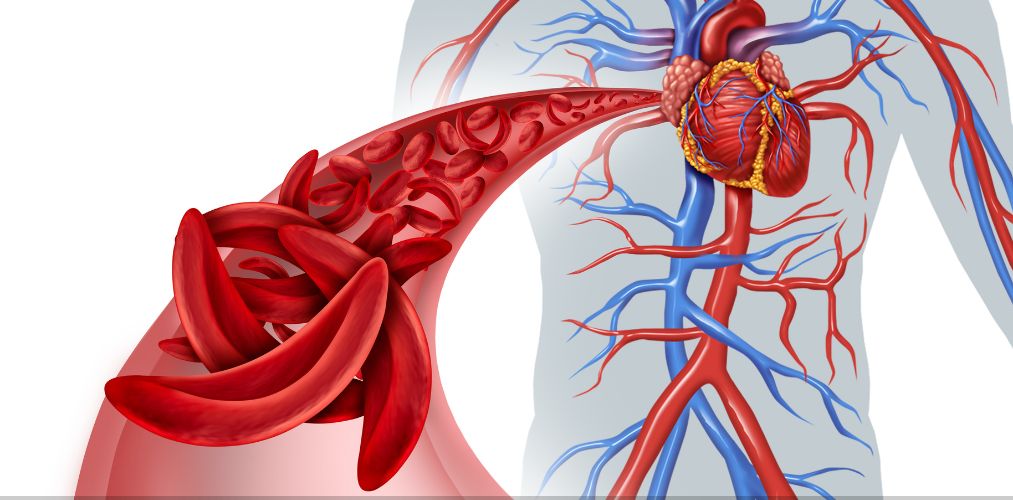Tips for a Healthier Life
Sickle cell disease (SCD) is a genetic blood disorder that affects the shape and function of red blood cells. These cells, which are typically round and flexible, become rigid and crescent-shaped in individuals with SCD. This abnormal shape can lead to various complications, including pain, anemia and an increased risk of blood clots. To help, consider Oxbryta (voxelotor), a medication used to treat sickle cell disease (SCD). It is an oral medication that helps reduce the sickling of red blood cells and improve their ability to carry oxygen.
Foods That Help with Blood Clots
Omega-3 Fatty Acids
Sources: Fatty fish (such as salmon, mackerel and sardines), flaxseeds, chia seeds and walnuts.
Benefits: Omega-3 fatty acids have anti-inflammatory properties and can help reduce blood clot formation by decreasing platelet aggregation and improving blood flow.
Leafy Green Vegetables
Sources: Spinach, kale, Swiss chard and collard greens.
Benefits: These vegetables are rich in vitamin K, which is essential for blood clotting. However, moderation is key, as excessive vitamin K can interfere with blood-thinning medications.
Berries
Sources: Blueberries, strawberries, raspberries and blackberries.
Benefits: Berries are high in antioxidants and flavonoids, which help reduce inflammation and improve blood vessel function, lowering clots' risk.
Garlic
Sources: Fresh garlic, garlic powder and garlic supplements.
Benefits: Garlic has natural anticoagulant properties, meaning it can help prevent blood clots by reducing platelet aggregation.
Turmeric
Sources: Fresh turmeric root, turmeric powder and turmeric supplements.
Benefits: The active compound in turmeric, curcumin, has anti-inflammatory and anticoagulant properties, helping to improve blood flow and reduce clot formation.
Nuts and Seeds
Sources: Almonds, walnuts, flaxseeds, chia seeds and sunflower seeds.
Benefits: These foods are rich in healthy fats, vitamin E and antioxidants, all of which contribute to better blood vessel health and reduced inflammation.
Citrus Fruits
Sources: Oranges, lemons, limes, grapefruits and tangerines.
Benefits: Citrus fruits are high in vitamin C and bioflavonoids, which help strengthen blood vessels and reduce inflammation.
Whole Grains
Sources: Oats, quinoa, brown rice, barley and whole wheat.
Benefits: Whole grains are high in fiber and nutrients that help maintain healthy blood pressure and reduce the risk of blood clots.
What is Sickle Cell Disease?
Sickle cell disease is caused by a mutation in the hemoglobin gene. Hemoglobin is the protein in red blood cells responsible for carrying oxygen throughout the body. In SCD, the abnormal hemoglobin, known as hemoglobin S, causes red blood cells to become sickle-shaped. These misshapen cells can get stuck in blood vessels, leading to blockages and reduced blood flow, which can cause pain, organ damage and increase the risk of blood clots.
The Role of Diet in Managing Blood Clots
While diet alone cannot cure sickle cell disease, certain foods can help improve blood flow, reduce inflammation and lower the risk of blood clots. Including these foods in the diet can be beneficial for individuals with SCD.
Additional Tips for Managing Sickle Cell Disease
In addition to incorporating these foods into the diet, individuals with sickle cell disease should consider the following tips for managing their condition:
- Stay hydrated: Drinking plenty of water helps keep blood cells well-hydrated and less likely to stick together and form clots.
- Avoid smoking: Smoking can damage blood vessels and increase the risk of blood clots.
- Regular exercise: Physical activity helps improve circulation and overall cardiovascular health.
- Medical management: Adhering to prescribed medications and regular check-ups with healthcare providers are essential for managing SCD effectively.
The Basics of Sickle Cell Disease
Sickle cell disease is a challenging condition that requires a multifaceted approach to manage effectively. By incorporating foods that help reduce the risk of blood clots into their diet, individuals with SCD can improve their overall health and potentially reduce the frequency of complications. Always consult with a healthcare provider before making significant dietary changes, especially if you are taking medications for sickle cell disease. With the right combination of medical care and dietary adjustments, individuals with SCD can lead healthier, more comfortable lives.
